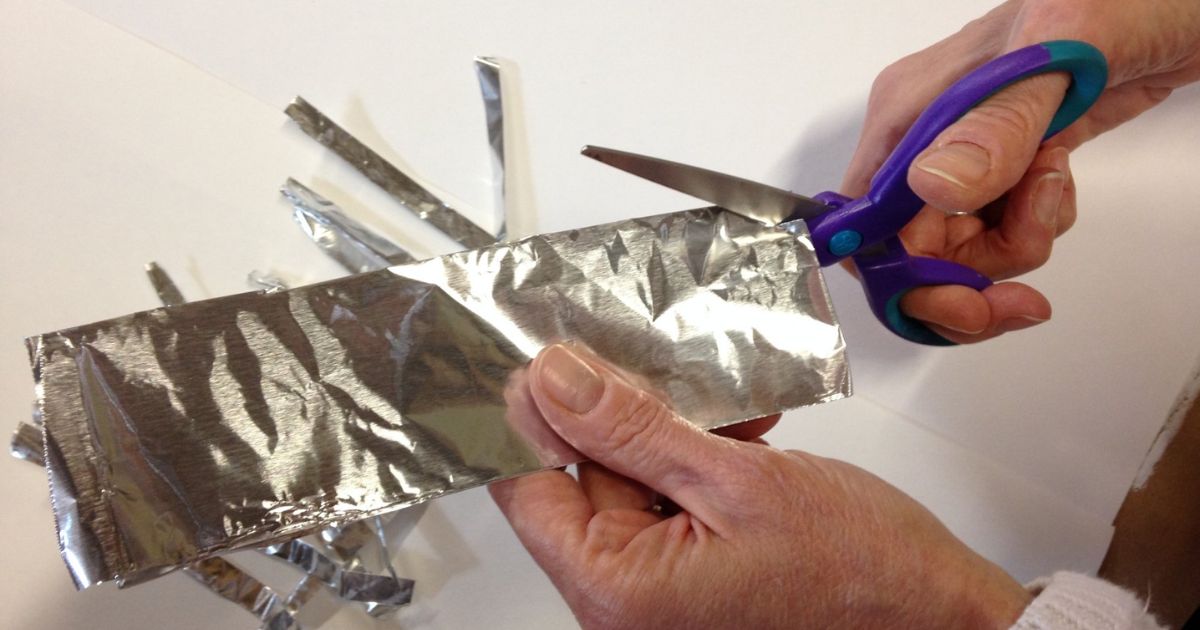Metal detectors are electronic devices designed to detect the presence of metal objects. They use electromagnetic fields to identify metallic items, such as coins, jewelry, or weapons, hidden beneath surfaces. Commonly used in security screening and treasure hunting, metal detectors generate audible or visual alerts when metal is detected.
Ever wondered if your kitchen foil could cause a scene at the airport security line? Picture this: you’re about to embark on a journey, and suddenly the thought hits you does tin foil set off metal detectors? It’s a common question with a straightforward answer.
Yes, tin foil can set off metal detectors. The aluminum in tin foil is conductive and reflects the electromagnetic waves emitted by metal detectors, triggering an alert. It’s why airport security may ask you to remove any items containing metal, including foil, during screenings.
The Science Behind Metal Detection
Metal detectors operate based on the principles of electromagnetism. These devices emit electromagnetic waves, typically in the form of a magnetic field, from a transmitter coil. When this field encounters a metallic object, such as coins, jewelry, or even tin foil, it induces a current within the metal. This induced current creates a secondary magnetic field around the metal object, disrupting the original field emitted by the metal detector. The detector’s receiver coil senses these disturbances and triggers an alert, signaling the presence of metal.
The conductivity of the metal plays a crucial role in this process. Metals that conduct electricity well, like aluminum found in tin foil, are more likely to set off the metal detector. The combination of the emitted electromagnetic field and the conductive properties of metals forms the core scientific mechanism behind the functioning of metal detectors, providing security personnel and enthusiasts with a reliable tool for identifying hidden metal objects.
How Metal Detectors Work
Metal detectors operate on the basic principle of electromagnetic induction. These devices consist of a coil of wire through which an electric current is passed, creating a magnetic field around the coil. When this coil is brought near a metallic object, such as a coin or jewelry, the metal disrupts the electromagnetic field. This disruption, in turn, induces a current in the metal object. The metal detector detects this change in the electromagnetic field and signals the presence of metal through an audible alert or a visual display.
The sensitivity of a metal detector can be adjusted based on the type and size of objects you want to detect. In essence, metal detectors exploit the conductive properties of metals, using the changes in the electromagnetic field to identify and locate hidden metal items. This technology finds applications in various fields, from security screenings at airports to archaeological excavations and treasure hunting hobbies.
Electromagnetic Waves and Conductivity
Electromagnetic waves and conductivity play a crucial role in the functionality of metal detectors. Metal detectors work by emitting electromagnetic waves and then detecting the reflections or disturbances caused by metallic objects. These waves are essentially a form of energy that travels through space, and when they encounter a conductive material like metal, they induce an electric current. This process creates a magnetic field around the metal, leading to an alert on the metal detector.
In simple terms, conductivity refers to a material’s ability to allow the flow of electric current. Metals, with their high conductivity, readily allow the passage of these electric currents induced by electromagnetic waves. This characteristic makes metals easily detectable by metal detectors, making them an ideal tool for identifying hidden metallic objects. Understanding the interplay between electromagnetic waves and conductivity provides insights into the science behind metal detection and why certain materials, like tin foil, can set off alarms in metal detectors due to their conductive properties.
Navigating the Tin Foil Dilemma

Navigating the tin foil dilemma requires a bit of insight into the functioning of metal detectors. These devices operate by emitting electromagnetic waves that interact with metallic objects, causing the detector to alert security personnel. When it comes to tin foil, its aluminum composition makes it highly conductive and reflective, setting off alarms during screenings. To avoid unnecessary delays and potential scrutiny at security checkpoints, it’s advisable to be mindful of items containing tin foil, especially during air travel.
For travelers facing the tin foil predicament, there are simple solutions to ensure a hassle-free journey through metal detectors. Opting for travel-friendly alternatives, such as plastic or paper wrapping, can eliminate the need for tin foil and mitigate the risk of triggering alarms. Additionally, being proactive in minimizing metal content in carry-on items can contribute to a smoother screening process, allowing individuals to pass through security checkpoints with ease and efficiency.
Security Screening Procedures
Security screening procedures are systematic measures implemented to ensure the safety and well-being of individuals within a specific environment, such as airports, government buildings, or public events. These protocols involve the use of various technologies, including metal detectors, X-ray scanners, and body scanners, to detect prohibited items or potential threats. During airport security screenings, passengers are typically required to pass through a metal detector, place personal belongings on a conveyor belt for X-ray inspection, and undergo additional checks if necessary.
The efficiency and effectiveness of security screening procedures rely on a combination of advanced technology and well-trained personnel. Security personnel are responsible for interpreting the results of screening technologies, identifying anomalies, and responding appropriately to potential threats. The goal is to strike a balance between maintaining the safety of individuals and ensuring a streamlined and respectful process for those undergoing security screenings. As technology continues to advance, security screening procedures evolve to adapt to new threats and challenges, ultimately contributing to a safer and more secure environment for everyone.
Instances When Tin Foil Can Pose an Issue
In certain instances, carrying tin foil can indeed pose issues when passing through metal detectors, particularly at locations like airports and high-security venues. The primary concern arises from the electromagnetic properties of aluminum, the main component of tin foil. When subjected to the electromagnetic waves emitted by metal detectors, tin foil can reflect these signals, triggering alarms and causing security concerns. This becomes especially relevant during airport screenings where heightened security measures are in place to ensure passenger safety.
Moreover, instances when tin foil can pose an issue extend beyond airports to various public venues and events. Security protocols at stadiums, government buildings, and concert venues often involve metal detectors to detect potentially prohibited items. Carrying tin foil in such situations may inadvertently attract attention and lead to additional security checks. Understanding these scenarios and opting for alternative packaging or storage methods can contribute to smoother and more efficient security processes for individuals navigating diverse public spaces.
FAQ’s
Does aluminum foil get detected in a metal detector?
Yes, aluminum foil can be detected by metal detectors. The electromagnetic properties of aluminum make it reflective to the electromagnetic waves emitted by metal detectors, causing the detector to register the presence of metal.
Can a metal detector detect tin?
Yes, a metal detector can detect tin. Tin is a metal, and metal detectors are designed to identify various types of metals by responding to their conductivity.
Does aluminum foil block security sensors?
No, aluminum foil does not block security sensors. In fact, it can enhance their detection capabilities. Aluminum is highly conductive and reflects electromagnetic waves, making it more likely to trigger security sensors rather than block them.
Conclusion
The interaction between tin foil and metal detectors sheds light on the importance of understanding the materials we carry through security checkpoints, particularly at places like airports and other high-security venues. The science behind metal detection reveals that aluminum, a key component of tin foil, is conducive to triggering alarms. This awareness is crucial for travelers seeking a hassle-free experience, encouraging them to choose alternative packaging methods to avoid unnecessary delays and scrutiny.
As we navigate the intricacies of security protocols, it becomes clear that informed choices can significantly impact our journey. From airports to stadiums, being mindful of the materials we carry, such as tin foil, ensures a smoother passage through metal detectors. By recognizing instances when tin foil can pose an issue and opting for travel-friendly alternatives, individuals can contribute to the efficiency of security processes.











